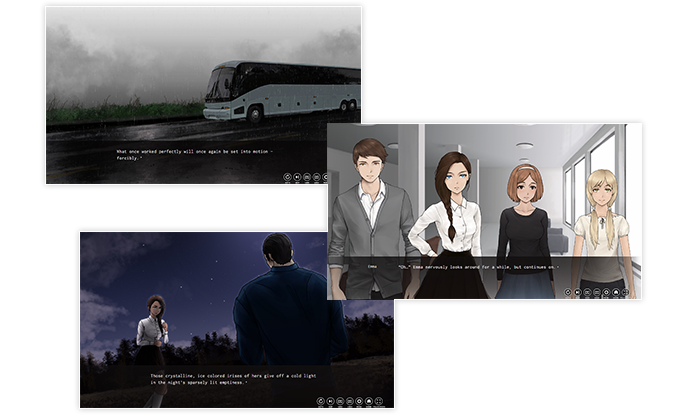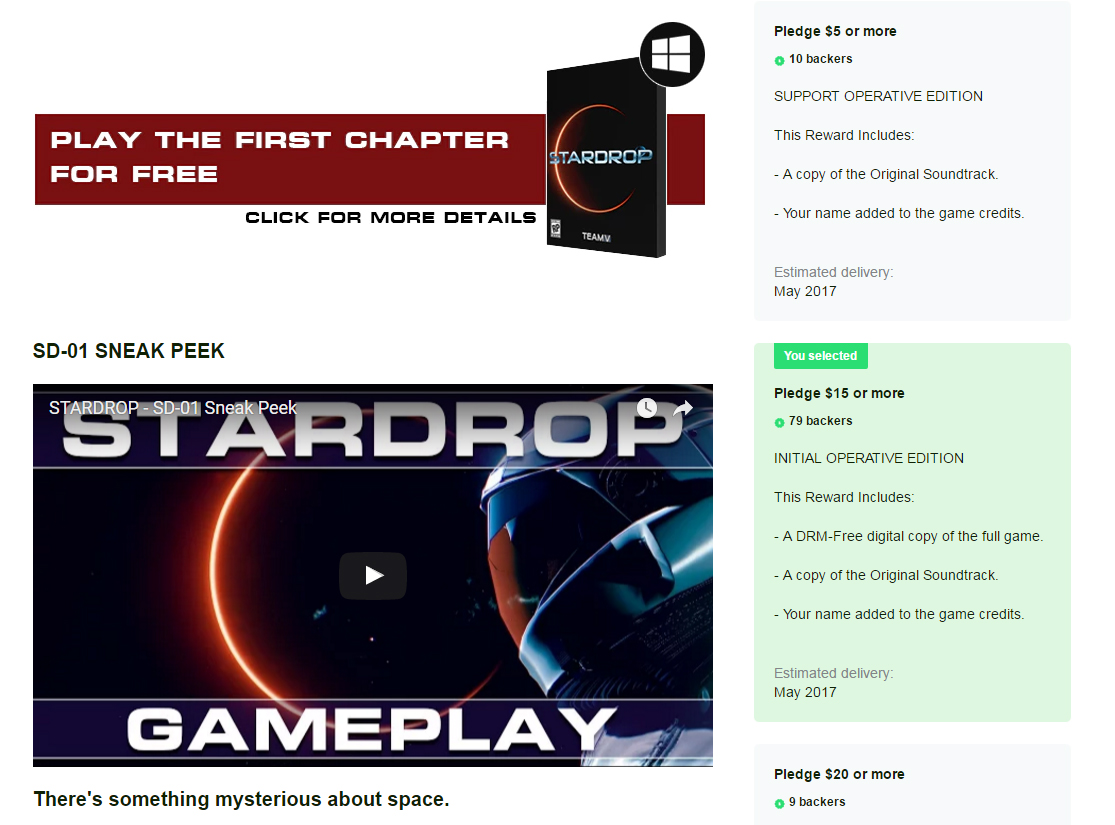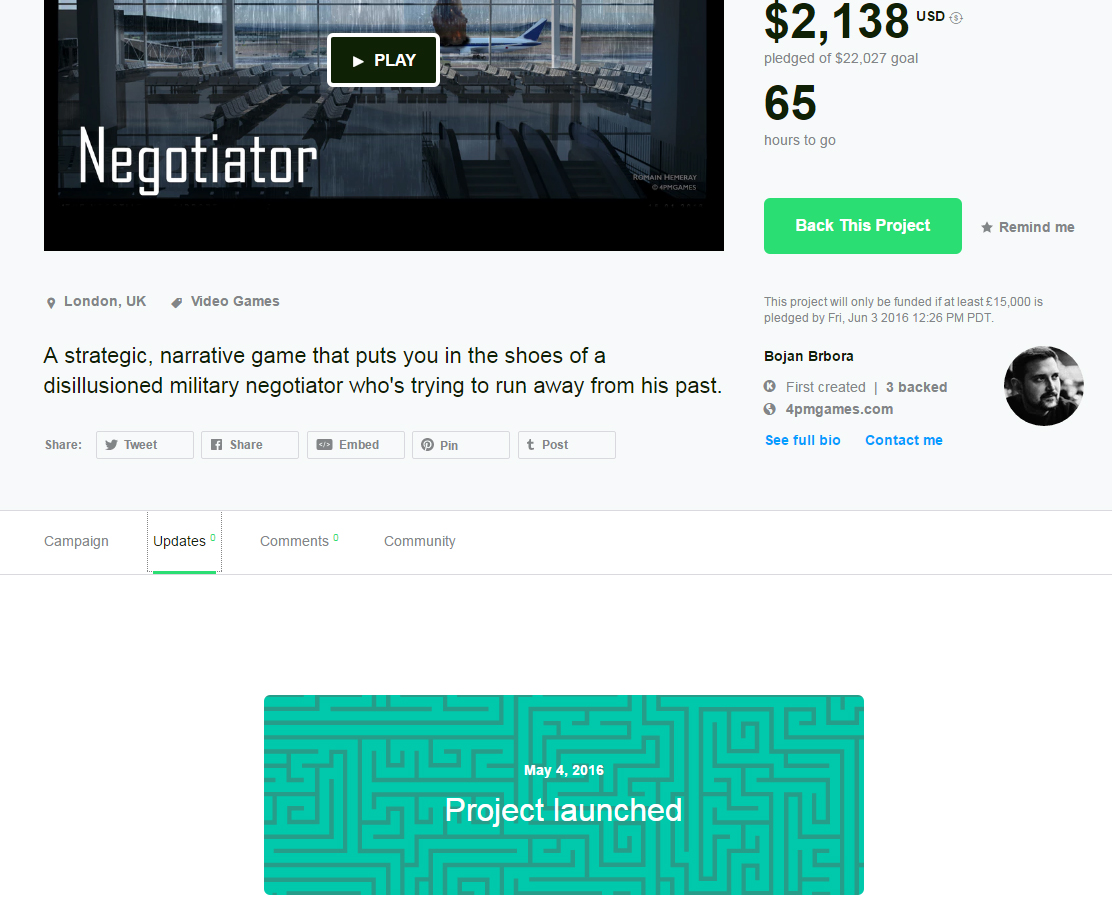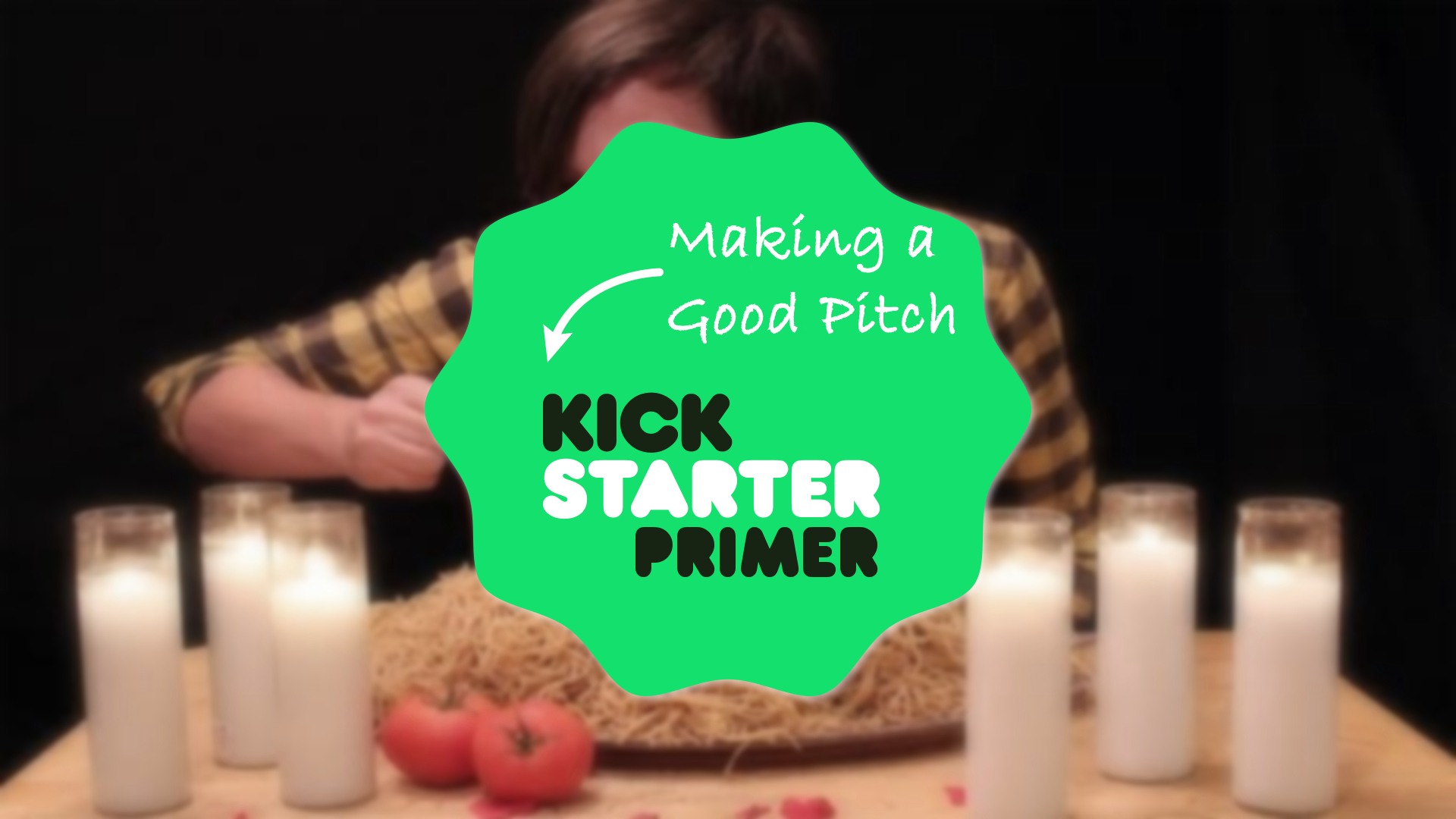The Kickstarter Primer video series aims to give those new to crowdfunding a look at what to know when backing your first campaign, we also want to give potential first-time campaign runners a glimpse into what makes a project successful or not. In this installment I wanted to cover perhaps the most important aspect of getting others to back your campaign. Namely the pitch, or what people will see when they come across your passion project.
 One thing that I have noticed recently was the number of otherwise great looking games with a less than stellar pitch. The video below covers the most recent ones that I’ve looked at that could have used a boost from an article like this one, but there are a few things to consider when diving in for the first time. I had covered this topic in detail over at the Space Quest Historian podcast this season in two parts (video and text pitches respectively), so if you’re interested in the nuances be sure to give them a listen.
One thing that I have noticed recently was the number of otherwise great looking games with a less than stellar pitch. The video below covers the most recent ones that I’ve looked at that could have used a boost from an article like this one, but there are a few things to consider when diving in for the first time. I had covered this topic in detail over at the Space Quest Historian podcast this season in two parts (video and text pitches respectively), so if you’re interested in the nuances be sure to give them a listen.
 There is a lot that goes into running a campaign and getting enough ready to show right off the bat is very important no matter how long or what time of the year you’re running. It’s important to capture your audience’s attention very early on as mentioned in the links above. In the case of the video you’ll have about a thirty second window and the first few paragraphs in the body before someone that’s not heavily into crowdfunding will stop watching or reading. To keep them there and hopefully pledge, you’ll need to give them what they need. Which is, unfortunately, different from person to person.
There is a lot that goes into running a campaign and getting enough ready to show right off the bat is very important no matter how long or what time of the year you’re running. It’s important to capture your audience’s attention very early on as mentioned in the links above. In the case of the video you’ll have about a thirty second window and the first few paragraphs in the body before someone that’s not heavily into crowdfunding will stop watching or reading. To keep them there and hopefully pledge, you’ll need to give them what they need. Which is, unfortunately, different from person to person.
 Be sure to show off and talk enough about your game. Discuss the plot, show off some screenshots or video, and if you have one, be sure to include a link to a demo or playable prototype. In any event, you need to be able to adequately make people understand what you’re doing without having to play something. That’s just extra icing on the proverbial cake. The more you have to show off, the better. Just don’t have a wall of text with nothing to say.
Be sure to show off and talk enough about your game. Discuss the plot, show off some screenshots or video, and if you have one, be sure to include a link to a demo or playable prototype. In any event, you need to be able to adequately make people understand what you’re doing without having to play something. That’s just extra icing on the proverbial cake. The more you have to show off, the better. Just don’t have a wall of text with nothing to say.
 They say that you only have one chance to impress someone and that goes doubly true with crowdfunding. I know that I’ve passed on otherwise good looking campaigns because I ended up having no idea what the game is about or the pitch was just so poorly planned out it embarrassed me. That said, there is a way to get feedback before going live. You can, and I highly recommend doing this, send out links to fans, crowdfunding experts, and those that can give you valuable feedback before going live. I know the ones that I’ve critiqued have launched stronger than if they didn’t ask for help.
They say that you only have one chance to impress someone and that goes doubly true with crowdfunding. I know that I’ve passed on otherwise good looking campaigns because I ended up having no idea what the game is about or the pitch was just so poorly planned out it embarrassed me. That said, there is a way to get feedback before going live. You can, and I highly recommend doing this, send out links to fans, crowdfunding experts, and those that can give you valuable feedback before going live. I know the ones that I’ve critiqued have launched stronger than if they didn’t ask for help.
 That about does it for this installment of Kickstarter Primers. I could easily write a much longer article just about what makes a good pitch and what doesn’t but this is a good start. If you have any questions about how crowdfunding works, either as a project creator or as a backer, please don’t hesitate to ask and I’ll feature it in a future video to clarify what you might not know.
That about does it for this installment of Kickstarter Primers. I could easily write a much longer article just about what makes a good pitch and what doesn’t but this is a good start. If you have any questions about how crowdfunding works, either as a project creator or as a backer, please don’t hesitate to ask and I’ll feature it in a future video to clarify what you might not know.
https://www.youtube.com/watch?v=qR2oscppYfA



